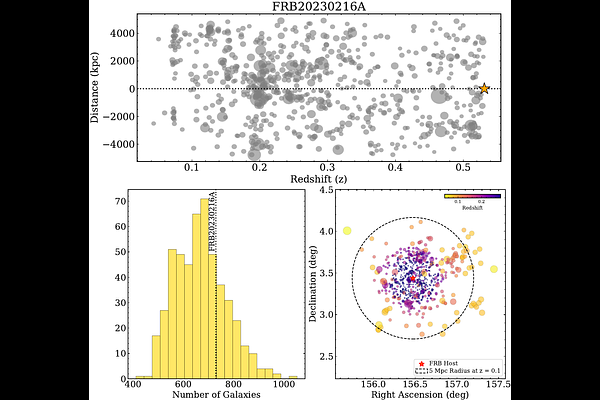A Correlation Between FRB Dispersion Measure and Foreground Large-Scale Structure

A Correlation Between FRB Dispersion Measure and Foreground Large-Scale Structure
Maryam Hussaini, Liam Connor, Ralf M. Konietzka, Vikram Ravi, Jakob Faber, Kritti Sharma, Myles Sherman
AbstractThe distribution of baryons in the Universe remains a fundamental open question in astronomy, and the dispersion measure (DM) of Fast Radio Bursts (FRBs) serves as a valuable tool for probing this cosmic gas. We investigate the impact of the foreground cosmic web on FRB DMs using 61 localized FRBs and public galaxy catalogs. We test for the large-scale structure's impact on cosmological DM using two methods. First, we searched for a correlation between galaxy number density along the line of sight and extragalactic DM, and found a statistically significant positive correlation ($p$ = $1.76 \times 10^{-5}$). The shape of this correlation contains information about the cosmic baryon distribution, and can also be used to better constrain host galaxy DM by providing an estimate of the cosmic contribution on a per-source basis. We observe similar correlations in a mock FRB survey based on the IllustrisTNG cosmological simulation, where the DM is dominated by filaments in the IGM and not by halos. Next, we performed a stacking analysis that measures the average excess DM as a function of impact parameter of foreground galaxies to obtain spatial information about how ionized gas is distributed around galaxy halos. We report excess DM in the stacked signal for impact parameters up to Mpc scales ($\sim$3$\sigma$). Finally, we identified FRBs that do not appear to intersect intervening halos within $r_{vir}$, allowing us to estimate the fraction of baryons that reside in the IGM. We find $f_{\mathrm{IGM}} \geq 0.69$ at 95$\%$ confidence, indicating significant astrophysical feedback.